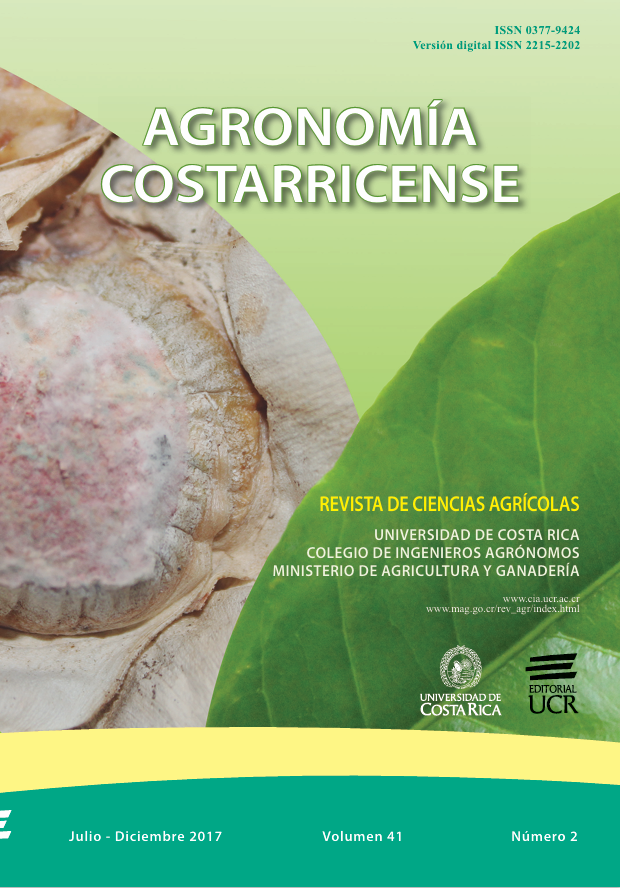Abstract
When new genetic materials are released to the market, it is necessary to study their nutrient requirements, the dynamics of nutrient absorption and evaluate their profitability; thus, the objective of this research was to determine the efficiency of nitrogen fertilization and the variation in macronutrient uptake due to 4 doses of nitrogen in a promising maize hybrid, during the dry season, in Patricia Pilar, in the province of Los Ríos, Ecuador. Nitrogen doses of 0, 66, 132 and 198 kg.ha-1 were studied in a randomized complete block design with 4 replicates and the means separated by Tukey’s test (p<0.05). Plants were sampled every 15 days in order to evaluate total dry matter (DM) production and nutrient concentration. N recovery efficiency was evaluated at 110 days (physiological maturity) and grain yield at 120 days. Results showed that for the promissory maize hybrid, application of 132 kg of N.ha-1 increased uptake of N, P, K, Mg and S; but not Ca. The rate of absorption varied according to the nutrient; K was absorbed to a greater extent in the vegetative stage (80%), followed by N (50%); while P absorption was higher (60%) in the reproductive stage. Absorption of Ca, Mg and S followed the trend of DM production. With N application of 132 kg.ha-1, N uptake efficiency (0.5 kg.kg-1) was higher and absorption of CaO and MgO were increased (20.4 kg.ha-1, 18,4 kg.ha-1, respectively). With application 198 kg of N.ha-1, extraction of P2O5, K2O and S were improved (39.1; 35.8 and 3.0 kg.ha-1, respectively), in addition, the promissory hybrid responded to doses of N greater than 132 kg.ha-1
##plugins.facebook.comentarios##

This work is licensed under a Creative Commons Attribution-NonCommercial-NoDerivatives 4.0 International License.
Copyright (c) 2017 Agronomía Costarricense


